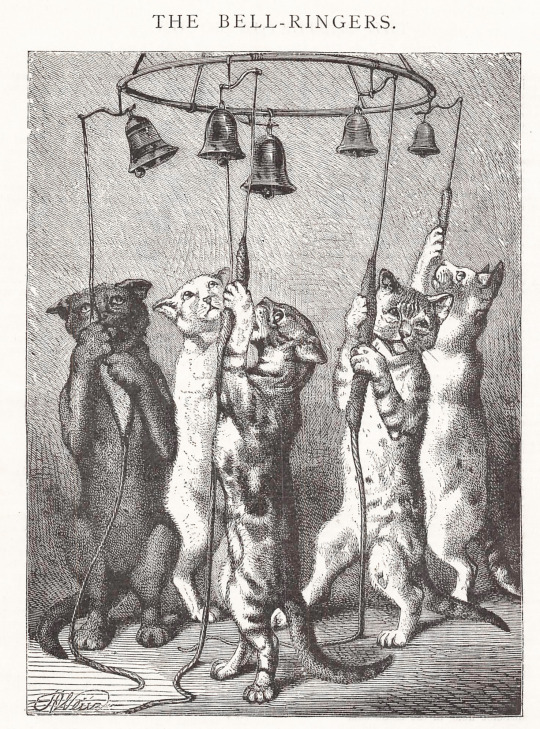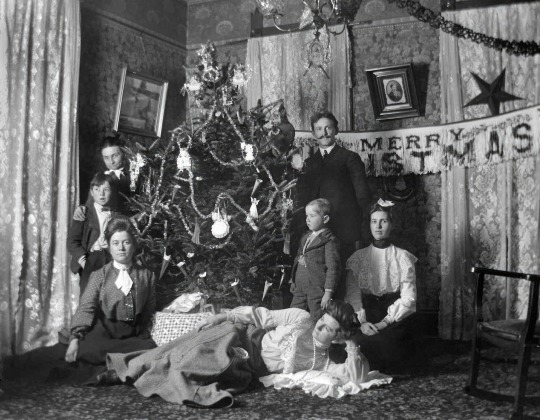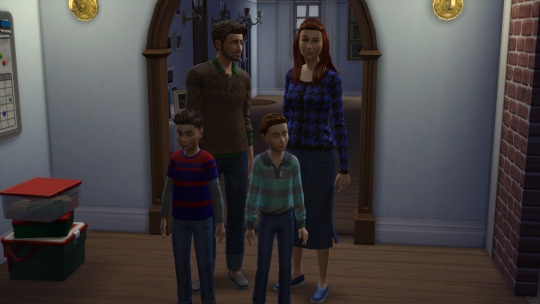#st nicholas magazine
Explore tagged Tumblr posts
Text

St Nicholas Magazine
1910
The Fairy Airship
828 notes
·
View notes
Photo

Illustration from St. Nicholas, 1873
4K notes
·
View notes
Text

Harrison Weir (1824-1906), 'The Bell Ringers', ''St. Nicholas'', Vol. 2, #3, Jan. 1875 Source
#Harrison Weir#british artists#st. nicholas#st. nicholas magazine#cats#vintage illustration#vintage art#etchings
531 notes
·
View notes
Text

Johnanna Stewart Mapes “A Fairy Book” illustration for a poem published in St. Nicholas Magazine (1907) Source
51 notes
·
View notes
Text

Boys’ Life Magazine - December 1936.
#vintage illustration#christmas#christmas season#holiday season#xmas#christmas holidays#americana#christmas aesthetic#bsa#boy scouts of america#boys’ life#boys’ life magazine#the 30s#1936#depression era america#vintage magazines#santa clause#santa claus#st. nicholas#st. nick#kris kringle
23 notes
·
View notes
Photo










Kelly Rowland photographed by Randee St. Nicholas for King Magazine (March/April 2003).
2K notes
·
View notes
Text
Old YA book about Napoleon

A Boy of the First Empire by Elbridge Streeter Brooks, 1913
I've seen some of its illustrations before, not knowing where they came from. This book was originally serialized in St. Nicholas Magazine (1873).
google books
55 notes
·
View notes
Photo

The history of Christmas traditions kept evolving throughout the 19th century, when most of the familiar components of the modern Christmas including St. Nicholas, Santa Claus, and Christmas trees, became popular. The changes in how Christmas was celebrated were so profound that it's safe to say someone alive in 1800 would not even recognize the Christmas celebrations held in 1900.
Washington Irving and St. Nicholas
Early Dutch settlers of New York considered St. Nicholas to be their patron saint and practiced a yearly ritual of hanging stockings to receive presents on St. Nicholas Eve, in early December. Washington Irving, in his fanciful History of New York, mentioned that St. Nicholas had a wagon he could ride “over the tops of trees” when he brought “his yearly presents to children.”
The Dutch word “Sinterklaas” for St. Nicholas evolved into the English “Santa Claus,” thanks in part to a New York City printer, William Gilley, who published an anonymous poem referring to “Santeclaus” in a children’s book in 1821. The poem was also the first mention of a character based on St. Nicholas having a sleigh, in this case, pulled by a single reindeer.
Clement Clarke Moore and The Night Before Christmas
Perhaps the best-known poem in the English language is “A Visit from St. Nicholas,” or as it’s often called, “The Night Before Christmas.” Its author, Clement Clarke Moore, a professor who owned an estate on the west side of Manhattan, would have been quite familiar with the St. Nicholas traditions followed in early 19th century New York. The poem was first published, anonymously, in a newspaper in Troy, New York, on December 23, 1823.
Reading the poem today, one might assume that Moore simply portrayed the common traditions. Yet he actually did something quite radical by changing some of the traditions while also describing features that were entirely new.
For instance, the St. Nicholas gift giving would have taken place on December 5, the eve of St. Nicholas Day. Moore moved the events he describes to Christmas Eve. He also came up with the concept of “St. Nick” having eight reindeer, each of them with a distinctive name.
Charles Dickens and A Christmas Carol
The other great work of Christmas literature from the 19th century is A Christmas Carol by Charles Dickens. In writing the tale of Ebenezer Scrooge, Dickens wanted to comment on greed in Victorian Britain. He also made Christmas a more prominent holiday and permanently associated himself with Christmas celebrations.
Dickens was inspired to write his classic story after speaking to working people in the industrial city of Manchester, England, in early October 1843. He wrote A Christmas Carol quickly, and when it appeared in bookstores the week before Christmas 1843 it began to sell very well.
The book crossed the Atlantic and began to sell in America in time for Christmas 1844, and became extremely popular. When Dickens made his second trip to America in 1867 crowds clamored to hear him read from A Christmas Carol. His tale of Scrooge and the true meaning of Christmas had become an American favorite. The story has never been out of print, and Scrooge is one of the best-known characters in literature.
Santa Claus Drawn by Thomas Nast
The famed American cartoonist Thomas Nast is generally credited as having invented the modern depiction of Santa Claus. Nast, who had worked as a magazine illustrator and created campaign posters for Abraham Lincoln in 1860, was hired by Harper’s Weekly in 1862. For the Christmas season, he was assigned to draw the magazine’s cover, and legend has it that Lincoln himself requested a depiction of Santa Claus visiting Union troops.
The resulting cover, from Harper’s Weekly dated January 3, 1863, was a hit. It shows Santa Claus on his sleigh, which has arrived at a U.S. Army camp festooned with a “Welcome Santa Claus” sign.
Santa’s suit features the stars and stripes of the American flag, and he’s distributing Christmas packages to the soldiers. One soldier is holding up a new pair of socks, which might be a boring present today, but would have been a highly prized item in the Army of the Potomac.
Beneath Nast's illustration was the caption, “Santa Claus In Camp.” Appearing not long after the carnage at Antietam and Fredericksburg, the magazine cover is an apparent attempt to boost morale in a dark time.
The Santa Claus illustrations proved so popular that Thomas Nast kept drawing them every year for decades. He is also credited with creating the notion that Santa lived at the North Pole and kept a workshop manned by elves. The figure of Santa Claus endured, with the version drawn by Nast becoming the accepted standard version of the character. By the early 20th century the Nast-inspired version of Santa became a very common figure in advertising.
Prince Albert and Queen Victoria Made Christmas Trees Fashionable
The tradition of the Christmas tree came from Germany, and there are accounts of early 19th century Christmas trees in America, but the custom wasn’t widespread outside German communities.
The Christmas tree first gained popularity in British and American society thanks to the husband of Queen Victoria, the German-born Prince Albert. He installed a decorated Christmas tree at Windsor Castle in 1841, and woodcut illustrations of the Royal Family’s tree appeared in London magazines in 1848. Those illustrations, published in America a year later, created the fashionable impression of the Christmas tree in upper-class homes.
By the late 1850s reports of Christmas trees were appearing in American newspapers. And in the years following the Civil War ordinary American households celebrated the season by decorating a Christmas tree.
The first electric Christmas tree lights appeared in the 1880s, thanks to an associate of Thomas Edison, but were too costly for most households. Most people in the 1800s lit their Christmas trees with small candles.
The First White House Christmas Tree
The first Christmas tree in the White House was displayed in 1889, during the presidency of Benjamin Harrison. The Harrison family, including his young grandchildren, decorated the tree with toy soldiers and glass ornaments for their small family gathering.
There are some reports of president Franklin Pierce displaying a Christmas tree in the early 1850s. But the stories of a Pierce tree are vague and there doesn't seem to be contemporaneous mentions in newspapers of the time.
Benjamin Harrison's Christmas cheer was closely documented in newspaper accounts. An article on the front page of the New York Times on Christmas Day 1889 detailed the lavish presents he was going to give his grandchildren. And though Harrison was generally regarded as a fairly serious person, he vigorously embraced the Christmas spirit.
Not all subsequent presidents continued the tradition of having a Christmas tree in the White House. By the middle of the 20th century, White House Christmas trees became established. And over the years it has evolved into an elaborate and very public production.
The first National Christmas Tree was placed on The Ellipse, an area just south of the White House, in 1923, and the lighting of it was presided over by President Calvin Coolidge. The lighting of the National Christmas Tree has become quite a large annual event, typically presided over by the current president and members of the First Family.
Yes, Virginia, There Is a Santa Claus
In 1897 an eight-year-old girl in New York City wrote to a newspaper, the New York Sun, asking if her friends, who doubted the existence of Santa Claus, were right. An editor at the newspaper, Francis Pharcellus Church, responded by publishing, on September 21, 1897, an unsigned editorial. The response to the little girl has become the most famous newspaper editorial ever printed.
The second paragraph is often quoted:
"Yes, VIRGINIA, there is a Santa Claus. He exists as certainly as love and generosity and devotion exist, and you know that they abound and give to your life its highest beauty and joy. Alas! how dreary would be the world if there were no Santa Claus. It would be as dreary as if there were no VIRGINIAS."
Church’s eloquent editorial asserting the existence of Santa Claus seemed a fitting conclusion to a century that began with modest observances of St. Nicholas and ended with the foundations of the modern Christmas season firmly intact.
By the end of the 19th century, the essential components of a modern Christmas, from Santa to the story of Scrooge to strings of electric lights were firmly established in America.
Source
192 notes
·
View notes
Text

June, 1924 Cover "St. Nicholas" magazine.
74 notes
·
View notes
Photo

From St. Nicholas magazine, 1888.
Here are collected the best lions I've encountered in my research to date.
Wondering about this post? Wait for the dissertation (TBA). For now: Weblog ◆ Books ◆ Videos ◆ Music ◆ Etsy
343 notes
·
View notes
Video
1920 illustration "Our Pretty Teacher" from St Nicholas magazine by totallymystified
20 notes
·
View notes
Text



The Fairies’ Frolics by William R. Thayer
ST. NICHOLAS
An illustrated magazine for young folks
1897
Source : archive.org
123 notes
·
View notes
Text




Kelly Rowland photographed by Randee St. Nicholas for King Magazine, 2003
#2003#2000s#y2k#model#singer#photoshoot#fashion#style#famous#celebrity#hair#makeup#kelly rowland#black girl magic#black beauty#black model#black woman#black women#king#king magazine
43 notes
·
View notes
Text

Harrison Cady (1877-1970), 'A Race in Fairy-Land', ''St. Nicholas'', #4, Feb. 1909 Source
#harrison cady#american artists#st. nicholas#st. nicholas magazine#vintage illustration#vintage art#fairy art#fairies#faerie
203 notes
·
View notes
Text
Generation 1 Family Recap

The founders, Johnathan and Laila Loomis, with their two youngest, Nicholas and Bryce.
Denomination: Irisite
Fundie Status: Full Fundie
Johnathan made a fortune as a writer, first of books and translations of the Book of the Watcher, then as a magazine writer for ETW. They have had 11 total blessings and will soon be entering elderhood.

Danny and Iris Marsh with their three children, Isabel, Kenneth, and Antony.
Denomination: St. Cornelius
Fundie Status: Fundie-Lite
Iris is the eldest Loomis child and the oldest of the first set of twins. Danny manages to keep the family going in their small house, bringing home a decent income as an artist. Over a period of years the couple decided to do Natural Family Planning, as many in the church of St. Cornelius do, and have remained at three blessings. After a long moral battle, Iris also decided to start wearing pants.

Isla and Ezekiel Shearer, center, with four of their six children. On the left, twins Alana and Ryan, on the right twins Ratna and Shelley. Not pictured are their two eldest, Bo and Marjorie, who are not twins. Bo is currently rooming with his cousin Darin, Adam Loomis’ eldest son.
Denomination: Irisite
Fundie Status: Full Fundie
Isla is Iris’ twin sister and is married to Ezekiel, the eldest of the six Shearer children. Ezekiel works as a pastor at the Irisite church and they live on a modest middle class income. All Isla ever wanted was to have a big family, and she certainly got her wish. They are expected to have many more children in the future.

Chastity and Adam Loomis, here with six of their seven blessings. Back row, from left to right, Emilie, Major, Kory, Maya; front row, left to right, Avery and Caitlyn. Their eldest, Darin, is not pictured.
Denomination: Irisite
Fundie Status: Full fundie.
Adam is the eldest of the Loomis’ second pair of twins, and is married to Chastity, the eldest Shearer daughter. Adam has a temper and is constantly belittling both his wife and his children, many of whom are adopted. He works as a park ranger, which doesn’t pay enough for them to have a large or nice home, but they scrape by. They are also expected to have, or adopt, many more children.

Damien and Penny Franklin.
Denomination: Scleran
Fundie Status: Conservative
Penny is Adam Loomis’ twin sister. As a teenager she leveraged her marriage to Damien as a way to escape her family’s vision for her life, and converted to the Scleran church. She now works as a scientist at a leading lab. Despite how their relationship started, Penny and Damien have grown to truly love each other, though neither of them want children.

Adriana and Joshua Loomis.
Denomination: Scleran
Fundie Status: Conservative
Joshua is the eldest of the Loomis’ third set of twins. Adriana is the third daughter of the Moore family, who originally ran the Irisite Newcrest church. Joshua disliked what he saw of his parents religion in regards to his twin brother, James, and his sister Penny. After marrying Adriana they both converted to the Scleran church and are happily childless. Joshua currently works as a local representative, and Adriana as an art critic.

James Loomis and Jonah Shearer, with James’ younger sister, Maxine Loomis.
Denomination: None
Fundie Status: Ex-fundie
James (now Jamie) is Joshua’s twin brother. The night of his eighteenth birthday he and Jonah, the youngest of the Shearer children, eloped and ran away together to escape the homophobic Irisite church, each mutually deciding to leave religion entirely. Jamie is now a doctor at the San Myshuno hospital, and Jonah is part of a nonprofit, San My Pride. They are childless, though took in Jamie’s younger sister, Maxine (Max) after she was kicked out of the house by Johnathan Loomis. Since moving out Max has discovered that she is aromantic and asexual, and is developing her writing career.

Derek and Mary-Faith Loomis
Denomination: Eternal Teachings of the Watcher Megachurch, run by Geoffrey Landgraab.
Fundie Status: Full Fundie
Derek was the first singleton child of the Loomis family, and is married to the eldest daughter of the wealthy Landgraab family, who founded the ETW. Theirs was very much an arranged marriage, and they used Loomis family funds to purchase this large house where they’ll live until Derek inherits the Loomis family home. They are expected to have many children to uphold the image of the ETW, which they will do, if reluctantly. Derek currently works at a position in the magazine writing department of the ETW.
(A/N And that's a wrap on Gen 1! Thank you to everyone who has been following this story, and prepare for gen 2 with Mariah and Javi.)
#fundie simblr#fundie sims#fundie snark#gen 1#loomis family#modest sims#quiverfull sims#ts4#ts4 gameplay
8 notes
·
View notes
Text

Maud & Miska Petersham
St. Nicholas Magazine, October 1921
10 notes
·
View notes